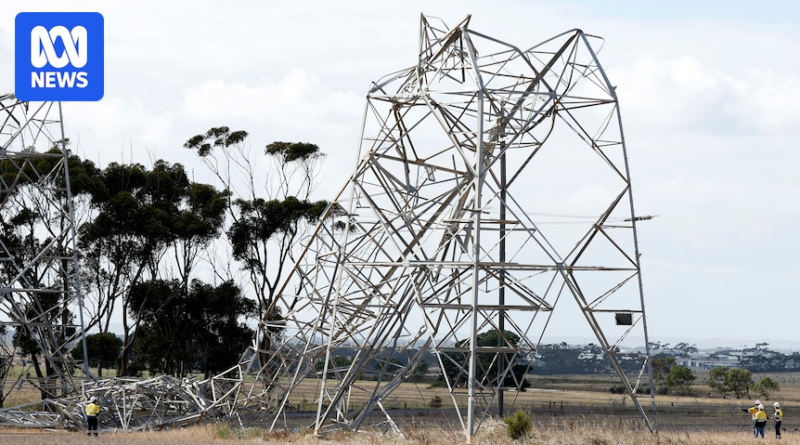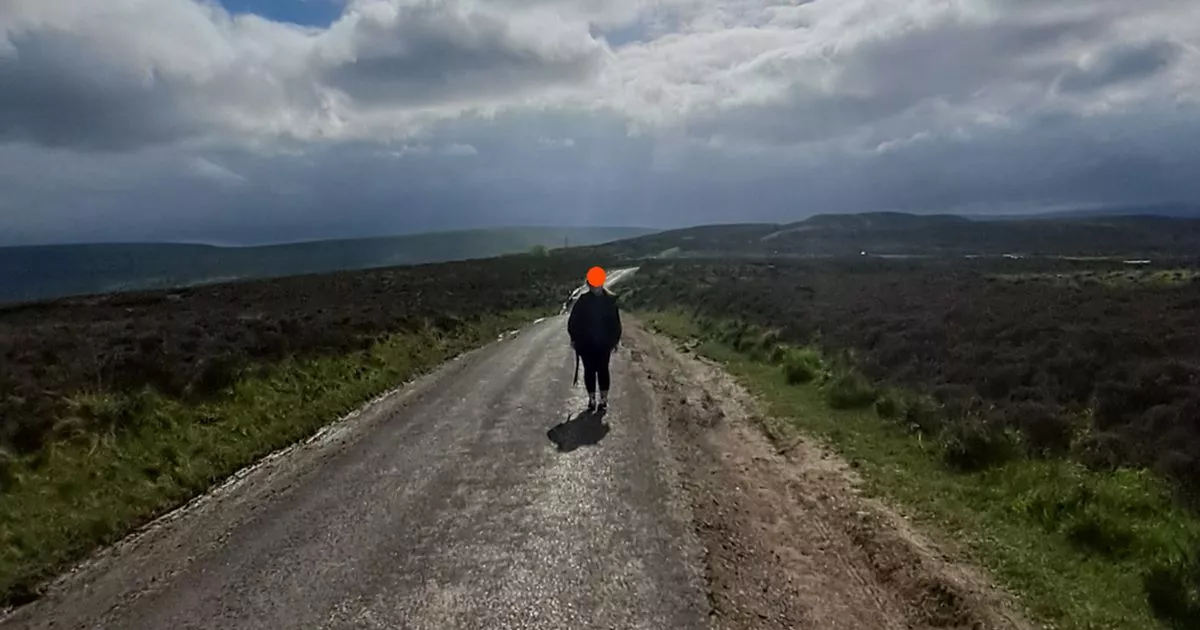After a weird summer of floods and heatwaves, scientists explain why weather extremes are 'on steroids' – ABC News
Search the news, stories & people
Personalise the news and
stay in the know
Emergency
Backstory
Newsletters
中文新闻
BERITA BAHASA INDONESIA
TOK PISIN
Topic:Climate Change
Australia's summer has been a mix of storms in the eastern states, flooding in the tropics, and seemingly endless heatwaves in Western Australia. (Andrew O'Connor, Dean Barlow)
When winds as high as 260 kilometres per hour tore down transmission towers in South Australia in 2016 and plunged the state into an electricity void, it took people by surprise.
The sight of high-voltage transmission lines, crumpled on the ground was almost surreal.
Eight years later, as fierce storms broke over Victoria, images of wilted towers were again causing consternation.
Thousands of households and businesses were left without power in Victoria after storms knocked down transmission towers after a day of high temperatures. (AAP: Con Chronis)
What was dubbed a "black swan" event nearly a decade ago, something unpredictable and beyond imagination, is now happening with increasing regularity.
The word "unprecedented" is losing much of its power, as the world lurches from one crazy weather event to the next.
In many ways the terms "climate change" and "global warming" don't do enough to describe what is happening to the world, as the burning of fossil fuels causes the earth's temperature to increase.
"Global weirding" was a term coined in the early 2000s but never really took off.
More recently United Nations secretary-general António Guterres described it as "climate breakdown".
ANU water expert Albert van Dijk said "global increased variability" would be the more technical term, though it's not very catchy.
"We swing more violently from dry periods to wet periods; from hot periods to cool periods," he said.
"The globe is getting warmer, but it doesn't mean it's always everywhere warmer, it can also be colder, actually.
"The whole climate system is more violent, if you like the pendulum swings wider than it used to."
It encapsulates why many people in Australia have felt anecdotally like it's been a weird summer, including Professor van Dijk, who lives on the Gold Coast.
"We had a mini tornado over Christmas and then shortly after that 500 millimetres of rain, it was pretty weird in many ways," he said.
"The weather is behaving more erratically."
A house in south-east Queensland was torn apart after severe storms over Christmas. (ABC News: Julia Andre)
While several normal climate drivers are influencing the weather, like La Niña and El Niño, Professor van Dijk said climate change is having an influence.
"It's all got to do with energy, the climate is warming, that means there's more energy in the atmosphere and there's also more heat and energy in the oceans," he said.
"Storm systems, cyclones, whatever, they're on steroids, they're getting supercharged.
"What would happen, still happens, it just happens faster and worse."
Looking at the Bureau of Meteorology's Annual Climate Statement for 2023, the headline figures make it seem like a fairly unremarkable year.
Nationally, it wasn't the hottest, driest or wettest, despite the world experiencing its hottest year on record.
But if you dig a little deeper it was "pretty out there", according to Professor van Dijk.
"On average it wasn't a remarkable year, but if you look at different times and regions it was really out there, really wet, then really dry … then really wet again."
"It was a year of opposites, a weird year."
If you take a look at the following maps you can see how.
Annual data from the Bureau of Meteorology for 2023 shows rainfall was above average for much of northern Australia, but below average further to the south. (Supplied: Bureau of Meteorology)
The difference between rainfall in northern and southern Australia was quite stark. So too, was the difference between seasons.
It was dry for three months, which turned into three months of above-average wet conditions. (Supplied: Bureau of Meteorology)
Temperatures between the seasons also varied wildly.
When you dig even deeper into the data, rainfall averages are also hiding the reality of how fast and furious rainfall is becoming.
When it rains it pours, as the saying goes.
Jason Evans, a climate scientist at the University of NSW, studied short rain bursts of 10 minutes in Sydney over the last 20 years and was surprised by how stark the change had been.
"I'm sure everyone's experienced this, you're in a rainstorm, and then all of a sudden, it just absolutely pummels down but that only lasts a few minutes," he said.
"In the hourly durations, or a few hour durations, we do see an increasing trend in intensity, but it's a fairly small increase.
"In these very short, rapid rain bursts, we see a really strong increase in the intensity of these rain bursts."
Professor Evans said while the increases correlate to global warming, they can't yet say categorically that it's the cause until more studies are done.
He said, however, there was evidence that climate change is causing hourly and daily rainfall to become more intense.
Australians have become all too familiar with terms like "one in a hundred-year flood" after three years of La Niña broke multiple flood records.
Conrad Wasko from the University of Melbourne said those calculations come from a document called the Australian Rainfall and Runoff guidance, which he's currently in charge of updating to consider climate change.
"So essentially, somebody can estimate the size of floods into the future," he said.
"Things like the setting of planning zones or flood plains, that's usually done at a state level but the actual guidance on how to estimate those floods is actually a national document."
A street submerged in Brisbane's east in 2022 at a time when a triple-La Niña pattern broke flood records. (ABC News: Emma Pollard)
But the earth has warmed nearly 1 degree Celsius since those guidelines were written and extreme rainfalls have changed.
"The evidence is quite strong that short-duration rainfalls intensify more than longer-duration rainfall," Dr Wasko said.
"We can now make that distinction and we have more certainty around the numbers."
For every degree of warming, the new draft guidance estimates 1-hour rainfall events will have up to 15 per cent more rain, while 24-hour rainfall will increase by 8 per cent.
"We looked at over 300 peer-reviewed journal articles, we really scoured all the lines of evidence and all the sources of evidence we could and aggregated them all to come up with these estimates," Dr Wasko said.
"It was quite a long and involved process over several months to come to this point."
Understanding and predicting the impact of climate change on extreme wind is much harder than temperature or rainfall.
But researchers are beginning to delve into this relatively new field of science.
Professor Evans said like short-duration rainfall, wind gusts can be hard to observe.
"The chances of the weather station happening to be exactly the right place to record the strongest winds is infinitesimally small," he said.
"While radars are super useful when it comes to rainfall, they are not really helping us when it comes to these extreme wind gusts.
"We're in a position at the moment where actually, we mostly don't know."
A particularly strong monsoon is bringing strong winds and heavy rain to a large swathe of the Northern Territory. (ABC News: Dane Hirst.)
Professor Evans said observations over land over the last few decades show average wind speed has actually gone down.
But understanding how intense extreme wind gusts are is more complicated.
"I'm definitely not saying we aren't seeing a trend, there could be a trend there," he said.
"It's just based on our observation network, it's really hard to show."
It's a conundrum Professor Evans is trying to solve and believes as weather prediction models improve so too will our knowledge of wind.
"We can use the models to then understand what the distribution in time and space of these extreme wind gusts are," he said.
"That will help us understand then if we've been seeing any trends and if we might expect them to change further as the climate changes in the future."
What climate scientists do know is that with more energy in the atmosphere, storms are becoming more intense.
"When you have events like squall lines or cyclones, tornadoes, thunderstorms, they have more energy available to them," director of the Monash Energy Institute Roger Dargaville said.
"So, they tend to be more intense and more extreme."
Dr Dargaville said he was surprised wind could knock over transmission towers back in 2016, but that's no longer the case.
"It's now a very real possibility and will probably occur many times in the future," he said.
But where and when is hard to predict.
"I don't think we have good knowledge on what will happen to wind speeds in detail, it's a very stochastic and difficult-to-predict phenomenon," he said.
"They happen randomly, or almost randomly. But the drivers of that randomness are changing."
How scientists flying directly into hurricanes are key to solving one of the international meteorology community’s greatest forecasting challenges — the rapid intensification of hurricanes and cyclones.
Meteorologist Milton Speer from the University of Technology Sydney said while late summer storms aren't unusual, sea surface temperatures have been a contributing factor.
"Sea surface temperatures right along the east coast have been 1 or 2 degrees above average, there's so much warmth in the ocean," he said.
"There's also warmer sea surface temperatures currently across the southern part of the Southern Ocean … that would be providing extra energy to frontal systems that do manage to make it across into south-east Australia.
"Where you get more energy coming up from the warmer sea surface temperatures, you get stronger winds with the frontal systems."
Dr Dargaville said the strategy in dealing with "black swan events" should be to build a more resilient system.
"Resilient in lots of different ways, to be able to cope with lots of different stress events, or high impact events," he said.
"Because it is so difficult to predict when they're going to occur, how they're going to manifest and which parts of the system they're going to impact on."
Australia's systems need to be resilient on many levels. (ABC News: Hugh Hogan)
But he said that while the technical aspects are solvable, the real challenge is in the politics and economics.
"We're trying to strike a balance between engineering the system to make it as resilient as possible, but not make it so expensive that it's no longer affordable or useful," Dr Dargaville said.
"There is a risk that it's not cost-effective to make the system bulletproof, and we just have to deal with greater occurrences of disruptions to the power supply.
"We have a remarkably reliable system as it is and I think we're probably maybe a little bit spoiled, certainly a lot of other parts of the world have more frequent outages."
While climate change is causing more erratic weather and intensifying extreme events, knowing exactly where and when they will occur is currently beyond the ability of climate models.
What models can tell us is that with every degree of warming, largely caused by the burning of fossil fuels, extreme events will become more extreme.
Modelling shows how every degree of warming fuels the likelihood of extreme heat. (Supplied: Intergovernmental Panel on Climate Change)
"I think that's where climate and water cycle people like myself have struggled to bring the message across," Professor van Dijk said.
"One degree of warming doesn't sound so bad, but it's actually pretty bad when you consider that it makes these events that we've been seeing more severe."
Listen to the news in Warlpiri, Yolngu Matha and Kriol
Topic:US Elections
Topic:US Elections
Topic:Explainer
Topic:Explainer
Topic:Unrest, Conflict and War
Topic:Weather Warnings
Topic:Weather
Topic:Weather
Topic:Weather
ACT
Australia
Climate Change
Earth Sciences
Environmental Policy
Extreme Weather Events
NSW
NT
QLD
SA
TAS
VIC
WA
Weather Forecasts
Weather Phenomena
Weather Statistics
Weather Warnings
Topic:US Elections
Topic:US Elections
Topic:Explainer
Topic:Explainer
Topic:Unrest, Conflict and War
Topic:Cricket
Topic:Courts and Trials
Topic:Indigenous (Aboriginal and Torres Strait Islander)
Topic:Cricket
We acknowledge Aboriginal and Torres Strait Islander peoples as the First Australians and Traditional Custodians of the lands where we live, learn, and work.
This service may include material from Agence France-Presse (AFP), APTN, Reuters, AAP, CNN and the BBC World Service which is copyright and cannot be reproduced.
AEST = Australian Eastern Standard Time which is 10 hours ahead of GMT (Greenwich Mean Time)




